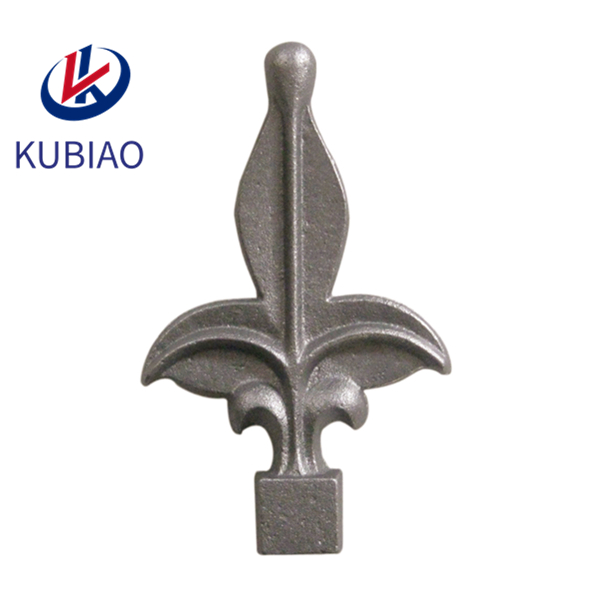
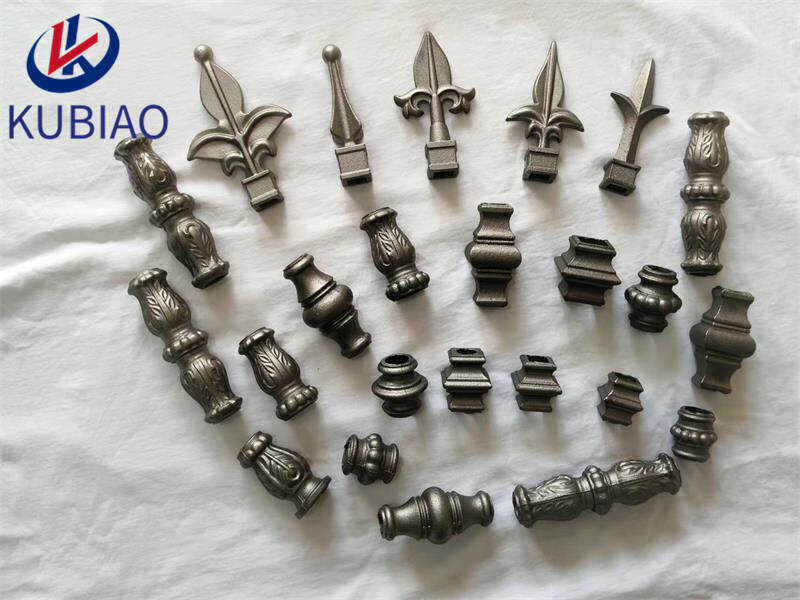
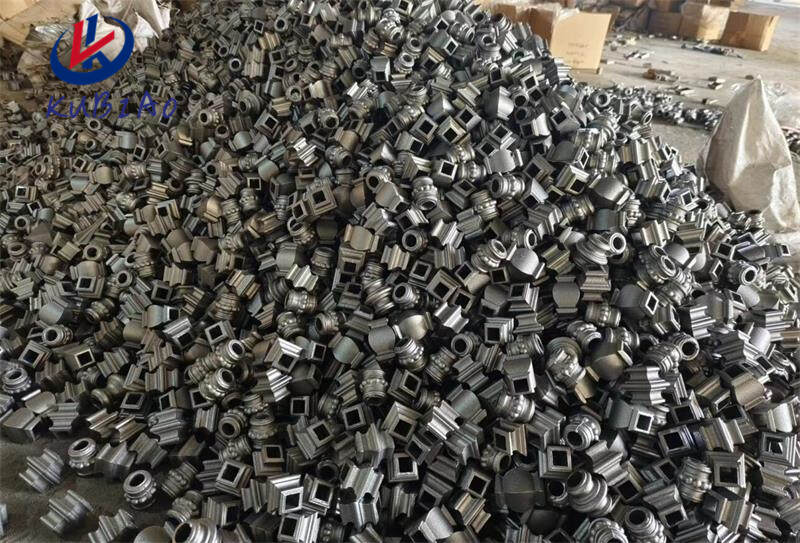
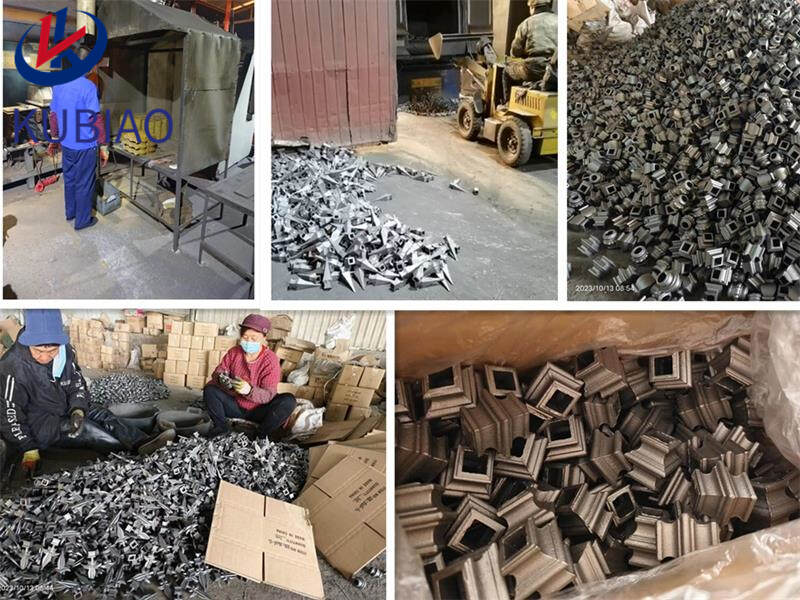
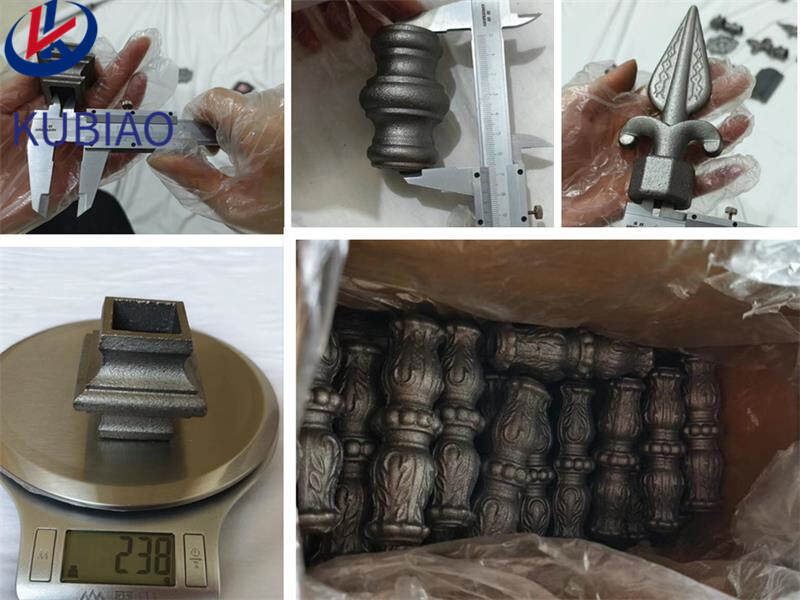
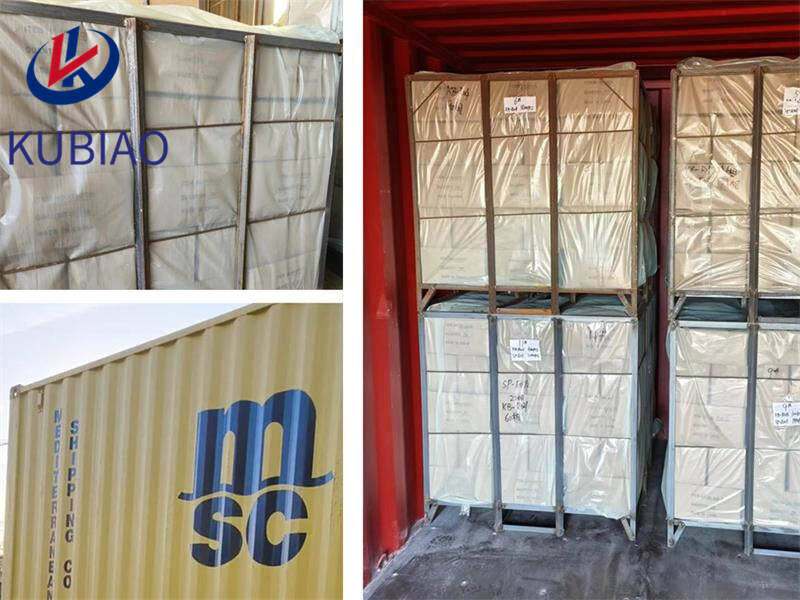
|
Product name |
iron fence spears |
|
Keyword |
ornamental iron gate spears ,cast iron fence caps,ornamental casting stud,Cast Iron Caps,iron fence cap,spear points ,cast iron stud ,iron flower cast |
| Place of Origin | China |
|
Quality standard |
We have our own professional QC team to insure the quality. |
|
Feature |
Cast iron is a strong metal material that can withstand large amounts of pressure and weight. It is also durable and resistant to corrosion, making it ideal as a decorative item |
|
Application scope |
School, etc. |
|
surface treatment |
sand blasting antirust antirust oil/water painting hot dip galvanizing |
|
Unit Weight(g) |
284(Contact us for specific information to confirm) |
|
terms of payment |
50% T/T in advance, balance before shipment. |
|
Life span |
30 years (Contact us for specific information to confirm) |
|
delivery time |
It usually takes 40 days. |
|
Advantage |
We keep good quality and competitive price to ensure our customers benefit |
|
Packing |
Carton+Pallet |
|
OEM/ODM |
Customization Service Provided |
|
design |
beautiful elegance sleek pretty |
|
Sales country |
All over the world for example:Aruba,Suriname,Burundi,New Zealand,United States of America |
|
MOQ |
500pcs(Contact us for specific information to confirm) |
1.How can I clean and maintain iron fence spears?
We have established a good reputation and reliable partnerships within the iron fence spears industry.
1. Remove any dirt or debris: Use a soft-bristled brush or cloth to remove any dirt or debris from the surface of the cast iron ornament.
2. Wash with mild soap and water: Mix a small amount of mild soap with warm water and use a cloth or brush to gently scrub the ornament. Rinse with clean water and dry thoroughly with a towel.
3. Remove rust: If there is any rust on the ornament, use a wire brush or sandpaper to gently scrub it off. You can also use a commercial rust remover if the rust is stubborn.
4. Apply a protective coating: To prevent future rusting, apply a thin layer of oil or a specialized cast iron sealer to the ornament. Be sure to follow the manufacturer's instructions for application.
5. Store in a dry place: Moisture can cause cast iron to rust, so it is important to store your ornaments in a dry place when not in use.
6. Avoid harsh chemicals: Avoid using harsh chemicals or abrasive cleaners on your cast iron ornaments as they can damage the surface.
7. Regularly inspect and touch up: Inspect your ornaments regularly for any signs of rust or damage. If you notice any, clean and touch up the affected area immediately to prevent further damage.
8. Protect from extreme temperatures: Extreme temperatures can cause cast iron to expand and contract, leading to cracks or damage. Avoid exposing your ornaments to extreme heat or cold.
9. Handle with care: Cast iron ornaments can be heavy and fragile, so handle them with care when moving or storing them.
10. Seek professional help if needed: If your cast iron ornament is heavily rusted or damaged, it may be best to seek professional help for restoration.
2.How long do iron fence spears typically last?
We attach importance to the innovation ability and team spirit of employees, have advanced R & D facilities and laboratories, and have a good quality management system.
Cast iron ornaments can last for decades or even centuries if they are properly cared for and maintained. However, their lifespan can vary depending on factors such as exposure to harsh weather conditions, regular cleaning and maintenance, and the quality of the cast iron itself. With proper care, cast iron ornaments can last for generations.
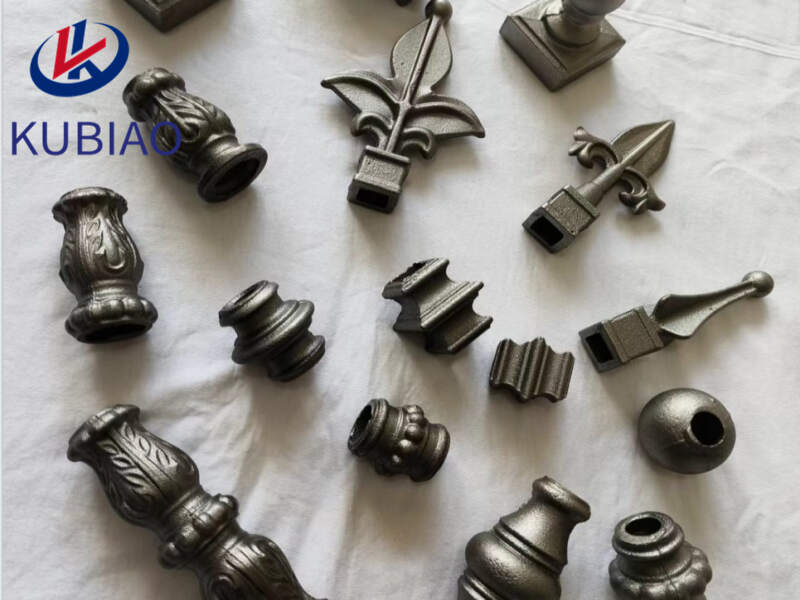
3.Are there any cultural or symbolic meanings behind certain cast iron ornament designs?
We actively participate in the iron fence spears industry associations and organization activities. The corporate social responsibility performed well, and the focus of brand building and promotion
Yes, there are several cultural and symbolic meanings associated with certain cast iron ornament designs. Some common examples include:
1. Fleur-de-lis: This symbol, which resembles a stylized lily or iris, is often associated with French culture and royalty. It is also used as a symbol of purity, light, and life.
2. Celtic Knots: These intricate designs, often seen in Celtic and Irish cultures, symbolize eternity, continuity, and interconnectedness.
3. Dragon: In many Asian cultures, dragons are seen as powerful and auspicious creatures, representing strength, wisdom, and good luck.
4. Sunburst: This design, featuring rays of light emanating from a central point, is often associated with the sun and its life-giving properties. It can also symbolize enlightenment and spiritual growth.
5. Pineapple: In Western cultures, the pineapple is often seen as a symbol of hospitality, warmth, and welcome.
6. Tree of Life: This design, featuring a tree with spreading branches and deep roots, is a common symbol in many cultures, representing the interconnectedness of all living things and the cycle of life.
7. Anchor: In maritime cultures, the anchor is a symbol of stability, strength, and hope.
8. Cross: The cross, a symbol of Christianity, is often seen in cast iron designs and can represent faith, sacrifice, and redemption.
9. Horseshoe: In many cultures, the horseshoe is seen as a symbol of good luck and protection.
10. Star of David: This six-pointed star is a symbol of Judaism and can represent unity, balance, and divine protection.
4.Can I customize my own iron fence spears?
We are centered on customers and always pay attention to customers' needs for iron fence spears products.
Yes, you can customize your own cast iron ornaments by using a variety of techniques such as painting, engraving, or adding embellishments. You can also create your own design or use a pre-made template to personalize the ornament. Additionally, you can choose the shape, size, and finish of the ornament to make it unique to your preferences.
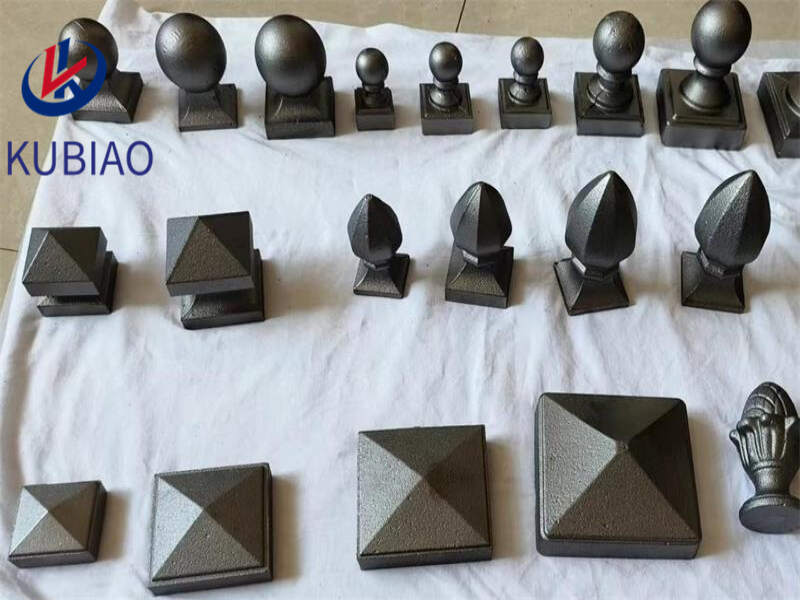
5.Can iron fence spears be used as garden decorations?
We have a first -class management team, and we pay attention to teamwork to achieve common goals.
Yes, cast iron ornaments can be used as garden decorations. They are durable and weather-resistant, making them suitable for outdoor use. They can add a touch of elegance and charm to any garden or outdoor space. Some common cast iron garden ornaments include statues, fountains, planters, and decorative accents such as bird baths and garden stakes.
6.Are there any famous artists or designers known for their iron fence spears?
We have the leading technology and innovation capabilities, and attach importance to employee training and development, and provide promotion opportunities.
1. Thomas Jefferson
2. Gustave Eiffel
3. Antoni Gaudí
4. Louis Sullivan
5. Hector Guimard
6. Daniel Chester French
7. Augustus Saint-Gaudens
8. John Flanagan
9. René Lalique
10. Louis Comfort Tiffany
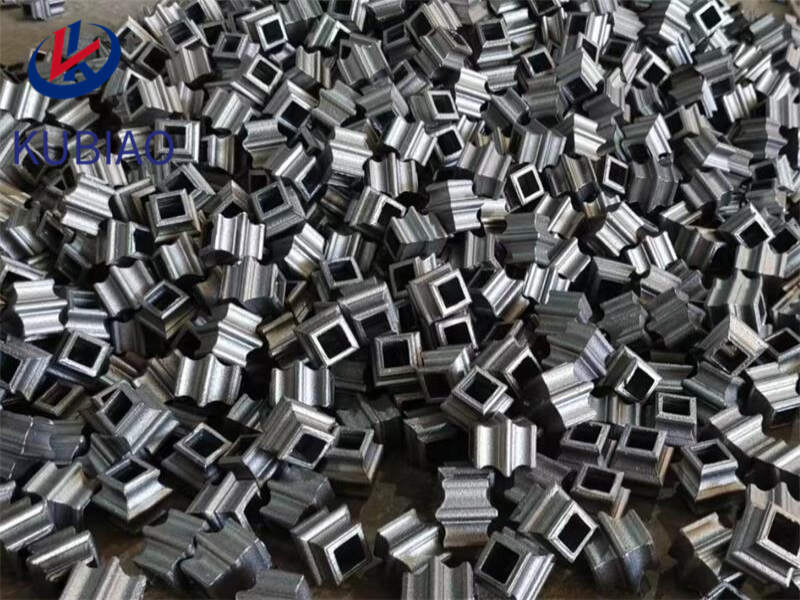
7.What is the history of iron fence spears?
We pay attention to the introduction and training of talents, scientifically regulate the management system, and focus on cultural construction and team cohesion.
Cast iron ornaments have a long and rich history dating back to ancient civilizations. The use of cast iron for decorative purposes can be traced back to the 5th century BC in China, where it was used to create intricate and ornate objects such as bells and statues.
In Europe, the use of cast iron for decorative purposes began in the 15th century, with the production of cast iron firebacks and grates for fireplaces. These were often adorned with intricate designs and patterns, and were considered a symbol of wealth and status.
During the Industrial Revolution in the 18th and 19th centuries, cast iron became more widely available and affordable, leading to an increase in its use for decorative purposes. Cast iron ornaments were used to decorate buildings, parks, and gardens, and were also popular as household items such as door knockers, garden furniture, and garden urns.
In the late 19th and early 20th centuries, the Victorian era saw a surge in the popularity of cast iron ornaments. The ornate and elaborate designs of the Victorian era were perfectly suited to the versatility of cast iron, and it was used extensively in the construction of buildings, bridges, and other structures.
However, with the advent of new materials such as steel and aluminum, the use of cast iron for decorative purposes declined in the 20th century. It was not until the lat<
br> 20th century that there was a renewed interest in cast iron ornaments, with a growing appreciation for their historical and aesthetic value.
Today, cast iron ornaments are still used to decorate buildings, parks, and gardens, and are also popular as collectibles and antiques. They are valued for their durability, intricate designs, and historical significance, and continue to be a popular choice for adding a touch of elegance and charm to any space.
8.What are the origins of cast iron ornament production?
We focus on teamwork and communication to achieve common goals, We attach great importance to this detail.
The production of cast iron ornaments can be traced back to the 18th century in Europe, particularly in England and France. During this time, cast iron was becoming a popular material for architectural and decorative elements due to its strength, durability, and ability to be molded into intricate designs.
The Industrial Revolution in the 19th century further fueled the production of cast iron ornaments, as advancements in technology and manufacturing processes made it easier and more cost-effective to produce these decorative pieces. Cast iron ornaments were used extensively in the construction of buildings, bridges, and other structures, as well as in furniture and household items.
The popularity of cast iron ornaments continued to grow throughout the 19th and early 20th centuries, with the rise of the Victorian era and its emphasis on ornate and elaborate designs. However, the production of cast iron ornaments declined in the mid-20th century with the introduction of new materials and construction methods.
Today, cast iron ornaments are still produced and used in various architectural and decorative applications, but they are often considered a symbol of the past and are highly valued for their historical and aesthetic significance.
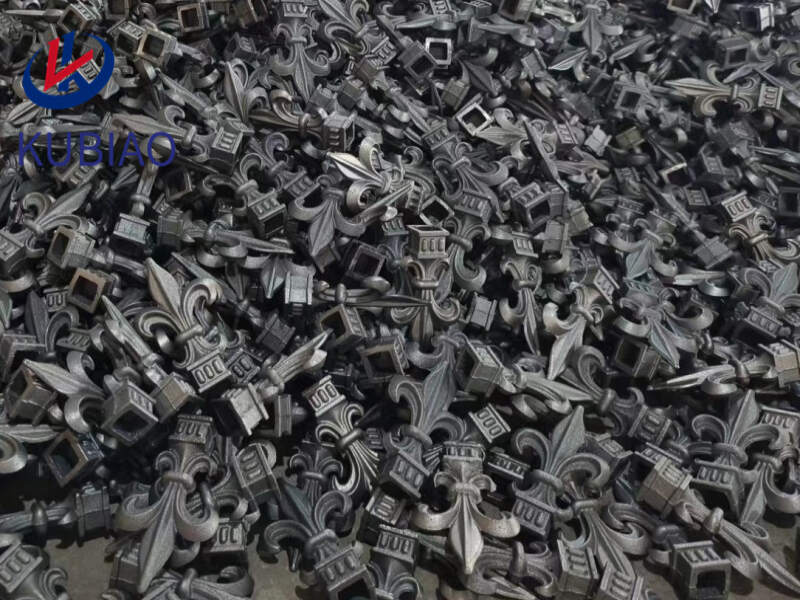
9.How do I properly hang or display iron fence spears?
We have a wide range of iron fence spears customer groups and establishes long -term cooperative relationships with partners. The countries we provide services include Aruba,Suriname,Burundi,New Zealand,United States of America.
1. Choose a sturdy and secure location: Cast iron ornaments can be heavy, so it is important to choose a location that can support their weight. Avoid hanging them on weak or flimsy surfaces.
2. Use appropriate hardware: Make sure to use strong and durable hardware, such as heavy-duty hooks or screws, to hang your cast iron ornaments. Avoid using adhesive hooks or tape, as they may not be strong enough to hold the weight.
3. Consider the weather: If you are hanging your cast iron ornaments outdoors, make sure to use weather-resistant hardware and consider the elements. For example, if you live in a windy area, you may need to use additional hardware or secure the ornament with wire to prevent it from falling.
4. Use a level: Before hanging your ornament, use a level to ensure it is straight and even. This will help prevent it from tilting or falling off the wall.
5. Hang with care: When hanging your ornament, make sure to handle it with care to avoid damaging it. If the ornament has delicate or intricate details, use a soft cloth or gloves to handle it.
6. Display on a stand: If you prefer not to hang your cast iron ornament, you can also display it on a stand or shelf. Make sure the stand is sturdy enough to support the weight of the ornament.
7. Group similar ornaments together: If you have multiple cast iron ornaments, consider grouping them together for a cohesive display. This can also help distribute the weight evenly and prevent any one ornament from becoming too heavy for the display surface.
8. Regularly check for damage: Cast iron ornaments can be prone to rust and corrosion, especially if displayed outdoors. Make sure to regularly check for any signs of damage and address them promptly to prevent further deterioration.
10.What are the differences between iron fence spears and other metal decorations?
We have advantages in marketing and channel expansion. Suppliers have established good cooperative relations, continuously improved workflows, improved efficiency and productivity, and provided customers with high -quality products and services.
1. Material: The main difference between cast iron ornaments and other metal decorations is the material used. Cast iron ornaments are made from iron that has been melted and poured into a mold, while other metal decorations can be made from a variety of metals such as aluminum, brass, copper, or steel.
2. Weight: Cast iron ornaments are typically heavier than other metal decorations due to the density of iron. This can make them more durable and less likely to be blown over by strong winds.
3. Strength: Cast iron is known for its strength and durability, making cast iron ornaments more resistant to damage and wear compared to other metal decorations.
4. Rust resistance: Cast iron is prone to rusting, so cast iron ornaments may require regular maintenance to prevent rust. Other metal decorations, such as aluminum or stainless steel, are more resistant to rust and may require less maintenance.
5. Design options: Cast iron ornaments are limited in terms of design options due to the casting process. Other metal decorations can be formed into more intricate and detailed designs using techniques such as welding, bending, and cutting.
6. Cost: Cast iron ornaments tend to be more expensive than other metal decorations due to the cost of the materials and the labor-intensive casting process.
7. Versatility: Other metal decorations can be used both indoors and outdoors, while cast iron ornaments are primarily used for outdoor decor due to their weight and rust-prone nature.
8. Historical significance: Cast iron has been used for centuries in architectural and decorative elements, giving cast iron ornaments a sense of history and tradition that other metal decorations may not have.
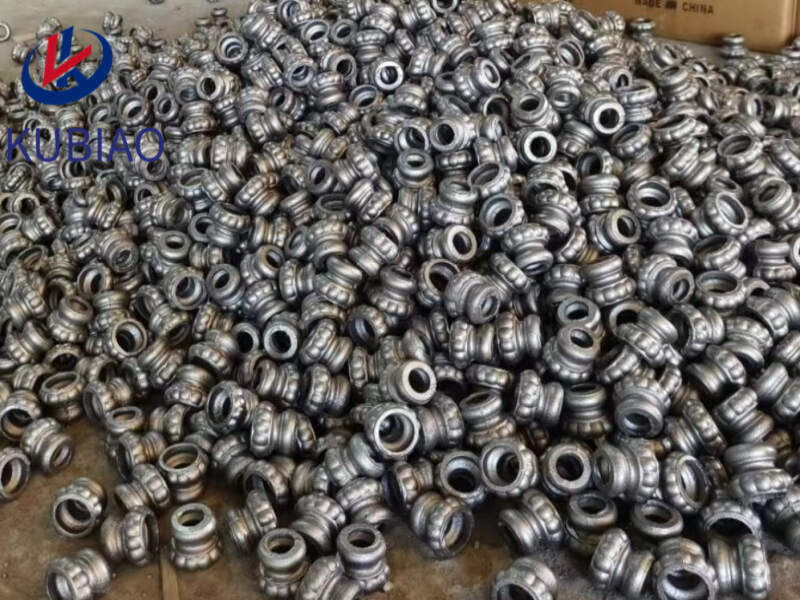
11.What colors can iron fence spears come in?
As one of the top iron fence spears manufacturers in China, we take this very seriously.
Cast iron ornaments can come in a variety of colors, including:
1. Black: This is the most common color for cast iron ornaments, as it is the natural color of the material.
2. Bronze: Cast iron can be treated with a bronze finish to give it a warm, metallic look.
3. White: Some cast iron ornaments may be painted white for a more modern or shabby chic look.
4. Rust: Over time, cast iron can develop a rust patina, giving it a unique and aged appearance.
5. Green: Some cast iron ornaments may be painted green for a vintage or antique look.
6. Gold: Cast iron can be treated with a gold finish for a luxurious and elegant look.
7. Silver: Similar to gold, cast iron can also be treated with a silver finish for a more modern and sleek appearance.
8. Blue: Some cast iron ornaments may be painted blue for a pop of color and a whimsical touch.
9. Red: Red is another popular color for cast iron ornaments, especially during the holiday season.
10. Custom colors: Cast iron ornaments can also be painted or coated in any custom color to match a specific theme or decor.
12.Can iron fence spears be used for functional purposes?
We pay attention to employee development and benefits, and provide a good working environment in order to improve the efficiency of employees and improve the quality management of iron fence spears products.
Yes, cast iron ornaments can be used for functional purposes such as door knockers, hooks, and brackets. They are durable and strong enough to support weight and perform their intended function. However, it is important to make sure that the ornament is properly installed and secured to ensure safety and stability.
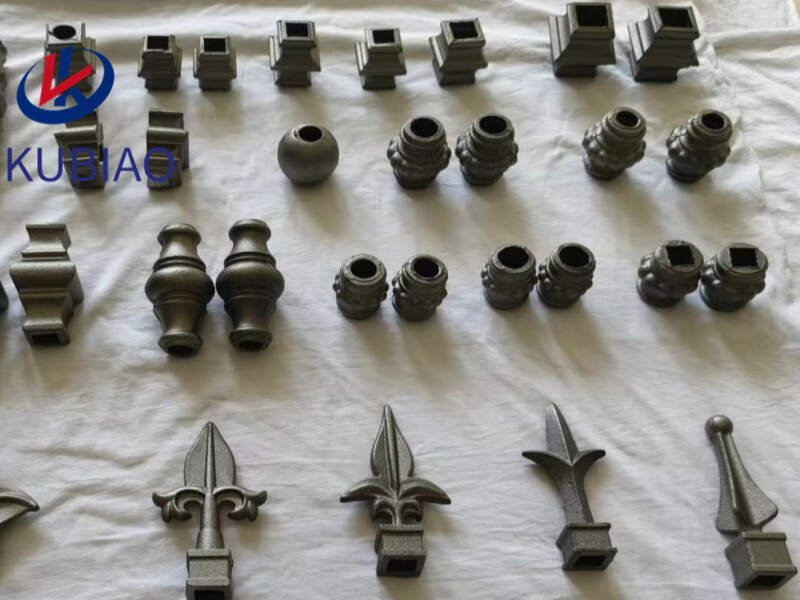
13.Are there any eco-friendly options for iron fence spears?
We are committed to providing personalized solutions and established long -term strategic cooperative relationships with customers.
Yes, there are several eco-friendly options for cast iron ornaments:
1. Recycled Cast Iron: Look for cast iron ornaments that are made from recycled materials. This reduces the need for new resources and helps to minimize waste.
2. Sustainable Production: Some companies use sustainable production methods, such as using renewable energy sources and minimizing water usage, to create their cast iron ornaments.
3. Organic Coatings: Instead of traditional paint or varnish, some cast iron ornaments are coated with organic materials, such as linseed oil or beeswax, which are more environmentally friendly.
4. Fair Trade: Look for cast iron ornaments that are certified as fair trade, meaning they are produced in an ethical and sustainable manner, and workers are paid fair wages.
5. Vintage or Secondhand: Consider purchasing vintage or secondhand cast iron ornaments instead of new ones. This reduces the demand for new production and gives new life to old items.
6. DIY: If you have some basic metalworking skills, you can create your own cast iron ornaments using recycled materials or scrap metal.
7. Upcycled: Some companies specialize in upcycling old cast iron items, such as old radiators or pipes, into unique and eco-friendly ornaments.
8. Biodegradable Packaging: When purchasing cast iron ornaments, look for companies that use biodegradable or recyclable packaging materials to reduce waste.
9. Local Production: Choosing cast iron ornaments that are locally produced reduces the carbon footprint associated with transportation and supports your local economy.
10. Longevity: Cast iron ornaments are known for their durability and longevity. By choosing high-quality, long-lasting ornaments, you can reduce the need for frequent replacements and ultimately reduce waste.
14.Are there any famous examples of iron fence spears in famous buildings?
We have established long-term and stable partnerships with our suppliers, so we have great advantages in price and cost and quality assurance.
1. Eiffel Tower - The iconic Parisian landmark features cast iron ornaments in its intricate lattice design.
2. Grand Central Terminal - The main concourse of this New York City train station is adorned with cast iron chandeliers and decorative elements.
3. Buckingham Palace - The gates and railings of the royal residence in London are made of cast iron, featuring ornate designs and crests.
4. St. Pancras Station - This Victorian railway station in London is known for its elaborate cast iron roof and decorative elements.
5. New York Public Library - The main branch of the NYPL features cast iron lamp posts and decorative grilles on its exterior.
6. The Palace of Westminster - The Houses of Parliament in London feature cast iron elements, including the iconic Big Ben clock tower.
7. The Iron Bridge - This 18th century bridge in Shropshire, England is considered a masterpiece of cast iron engineering and design.
8. The Smithsonian Castle - The oldest building on the National Mall in Washington D.C. features cast iron columns and decorative elements.
9. The Royal Albert Hall - This concert hall in London features a cast iron dome and decorative friezes on its exterior.
10. The Flatiron Building - This iconic New York City skyscraper is known for its unique triangular shape and cast iron facade.
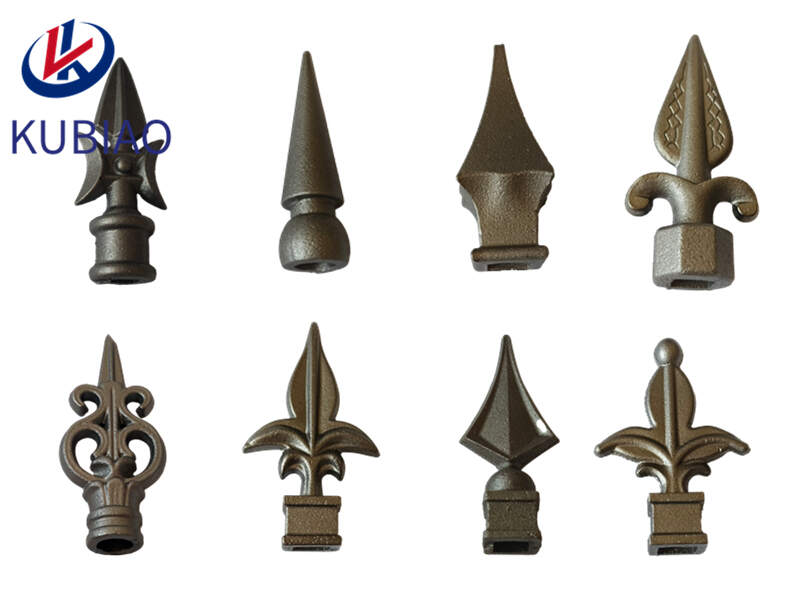
Welcome to contact us for Cast Iron Order!
Alex Chen
Email: sales@kubiaometal.com
Cellphone/Whatsapp: 0086 13020588163
Wechat: 13028588163
Tag:iron garden ornament ,casting spears,ornamental iron fence points ,cast iron bush,metal fence ornament ,cast iron spearhead
PREV: iron ornament panels
NEXT: iron casting spear
Product
Category